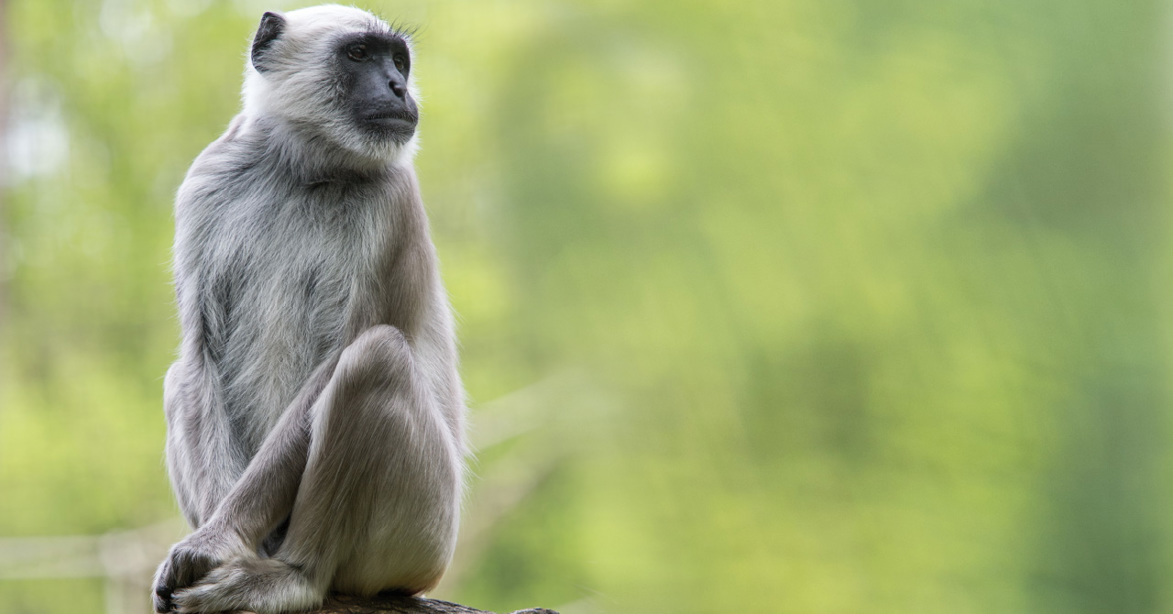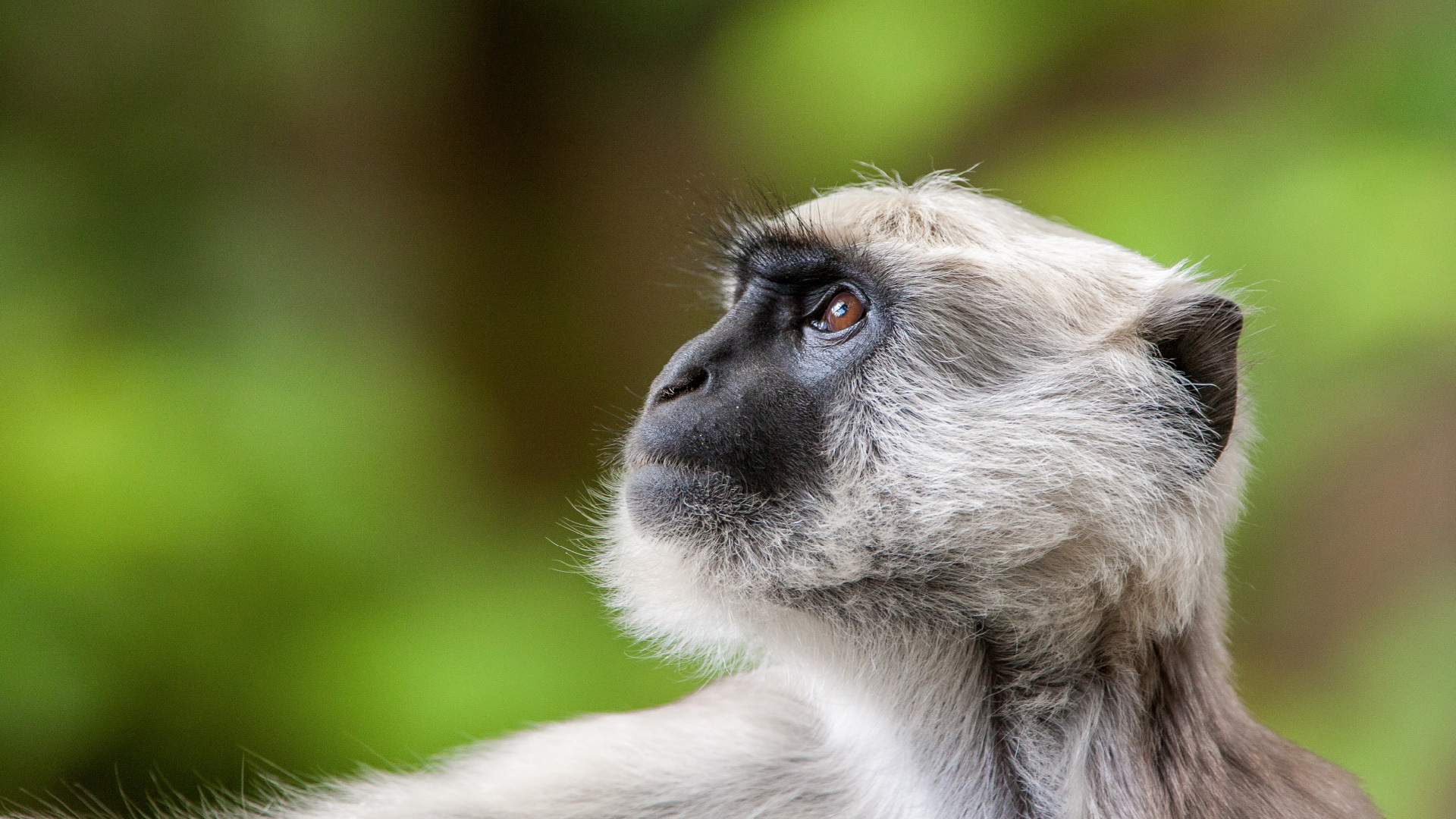Bengal Hanuman Langur
Semnopithecus entellus
Habitat
Rainforests, cities and grasslands
Food
Leaves, seeds and fruit
Weight
♂ ± 18 kg | ♀ ± 12 kg
Age
25 to 35 years
IUCN Status
Niet bedreigd
Appearance
Bengal Hanuman langurs are immediately recognisable by their jet-black face. Their hands and feet are black too. This is especially conspicuous because the Bengal Hanuman langur’s fur is mostly light- to silver-grey. The males are larger than the females. They also have very long tails. Bengal Hanuman langurs are relatively large primates.
Habitat
Bengal Hanuman langurs live in eastern India and western Bangladesh. They live in many different types of forests there. They also feel at home in the mountains, in semi-arid areas and dry grasslands. Moreover, they’re not really scared of humans, so they also appear in villages and cities.
Lifestyle
They live in groups of varying composition. The most common type is the harem structure of one adult male together with several adult females and their offspring. In the wild there are also groups containing multiple adult males as well as all-male (‘bachelor’) groups. Groups in the wild usually consist of thirty to eighty individuals. There is a strict hierarchy among both males and females. Young, sexually matures females are at the top of the hierarchy. As they grow older, they move lower down the hierarchy. Males usually only remain leader of a harem for three to four years. After that they are thrown out, often by a bachelor group of males who then decide among themselves who will take over as leader.
Behaviour
Bengal Hanuman langurs communicate with each other in a variety of ways including sounds, facial expressions, bodily gestures and scents. They spend a lot of time grooming, but females do this more than males. Grooming serves two functions. On the one hand the animals keep each other’s fur clean (no fleas!) and on the other hand it also serves a social function by establishing and maintaining relationships.

Reproduction
Generally speaking, Bengal Hanuman langurs give birth all year round. They only have a birthing season in areas where the availability of food fluctuates, such as in forests. Most females give birth for the first time when they are about four years old. Males only finish maturing when they are six or seven years old.
Following a gestation period of about 200 days, females usually give birth to one young. Twins are born very occasionally. Females often have their next child one or two years later. At birth, the young have a light face and brown fur. After about five months their face turns increasingly black and when they are about a year old, the young have the same colour as the adults. Mothers take care of their young, along with other females in the group. The males leave their natal group before they reach adulthood. They join an all-male group or live alone for a while. Females remain in their natal group.
Situation in the wild
Bengal Hanuman langurs are not endangered. This is because they are spread over a wide area and are good at adapting so they can survive in many different habitats. Bengal Hanuman langurs are an officially protected species in India. So people are not allowed to hunt them. But just as with other primates and lemurs, one of the main threats is the loss of habitat.

At Apenheul
Bengal Hanuman langurs are the largest primates that roam freely at Apenheul. They are about as big as medium-sized dogs. At Apenheul, the Bengal Hanuman langurs are situated at the end of the walking route.
Population management programme
Apenheul is part of the European endangered species programme (EEP) for Bengal Hanuman langurs. By working together with other international zoos, we help to maintain a genetically healthy population in zoos.
Fun facts
- Bengal Hanuman langurs are great jumpers, they can jump up to 10 metres.
- Bengal Hanuman langurs love eating leaves. This means there is lots of gas in their intestines. So when you walk through their enclosure, you will often smell farts.
- Bengal Hanuman langurs take their name from the Hindu god Hanuman. According to his story, his face, hands and feet were burnt black when he tried to save his wife from a fire. His black body parts are just like those of the Bengal Hanuman langurs.
Want to see the Bengal Hanuman Langur at Apenheul?
Get your tickets now and spot all the primate species!

Welcome to Apenheul
Open every day
Park open from Wednesday 30 April, 10.00 hour